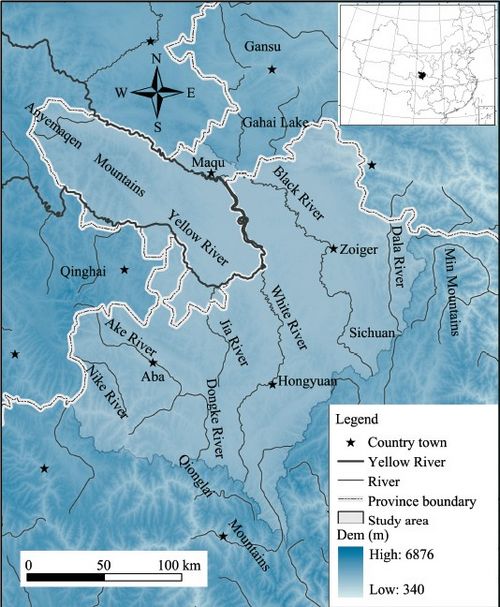Land use and land cover change (LUCC) is a complex process caused by the interaction between natural and social systems at different temporal and spatial scales (Lambin,2000), and LUCC dynamics are influenced by the types of land cover involved, the ecological mechanisms of succession and regeneration, the physical components of the environment,socioeconomic activities and their cultural context,and meteorological phenomena or other natural factors (Dale et al., 1994; Kareiva and Wennergren, 1995; Lindenmayer and Franklin, 1997). As LUCC studies cover large areas and time periods, making ground-based surveys prohibitively difficult, remotely sensed images are generally used in LUCC monitoring and analysis at a range of spatial and temporal scales (Mertens and Lambin, 1997; Rogan et al., 2003; Crews-Meyer, 2004). During recent decades, the study of LUCC has become a prominent research topic, as LUCC has been recognized as one of the most important factors of environmental modification worldwide, especially since the International Geosphere and Biosphere Programme (IGBP) and the International Human Dimensions Programme on Global Environmental Change (IHDP) initiated their core project on LUCC in the mid-1990s (Turner II,1995; Lambin, 2000).
The researchers described the LUCC process in the Zoige Wetland using multi-temporal remotely sensed images. It was found that the environment of the Zoige Wetland degraded greatly and continuously from 1975 to 2005. The observed environment degradation appears to have been caused by a combination of climate change (a trend towards warmer and drier) and human activities (overgrazing and drainage of water systems). The patterns of LUCC mainly included changes from forest to grassland, decreases in grassland vegetation coverage, and changes from wetland to sandy land.
Natural factors such as climatic variations constituted the background for the LUCC. However, the range of climatic variation did not appear to exceed the threshold required for the observed LUCC (such as the increase of sandy land).Human disturbances appear to be the most important factors responsible for the LUCC in the Zoige Wetland. Evidence for this is our observation that degraded meadows could restore by themselves once they had been fenced to protect them from grazing animals. Human disturbances leading to the LUCC in the Zoige Wetland mainly include over-grazing,drainage of water systems, land reclamation for agriculture,unsustainable collection of medical herbs and peat, and mining. However, compared with over-grazing and drainage of water systems, the other factors were only significant in some local areas.
The "tragedy of the commons" has led to problems such as overgrazing in common pasture areas throughout the study area, so it will be necessary to adjust the grazing rights of local peoples to prevent further overgrazing. It will be very important to strengthen the knowledge of environmental protection by local peoples so they will understand the need for such changes. In addition, the government must find alternative forms of employment that will be attractive to these peoples and that will sustain them in the long term so that they are not forced to return to their old, unsustainable practices.

Location of the Zoige Wetland

